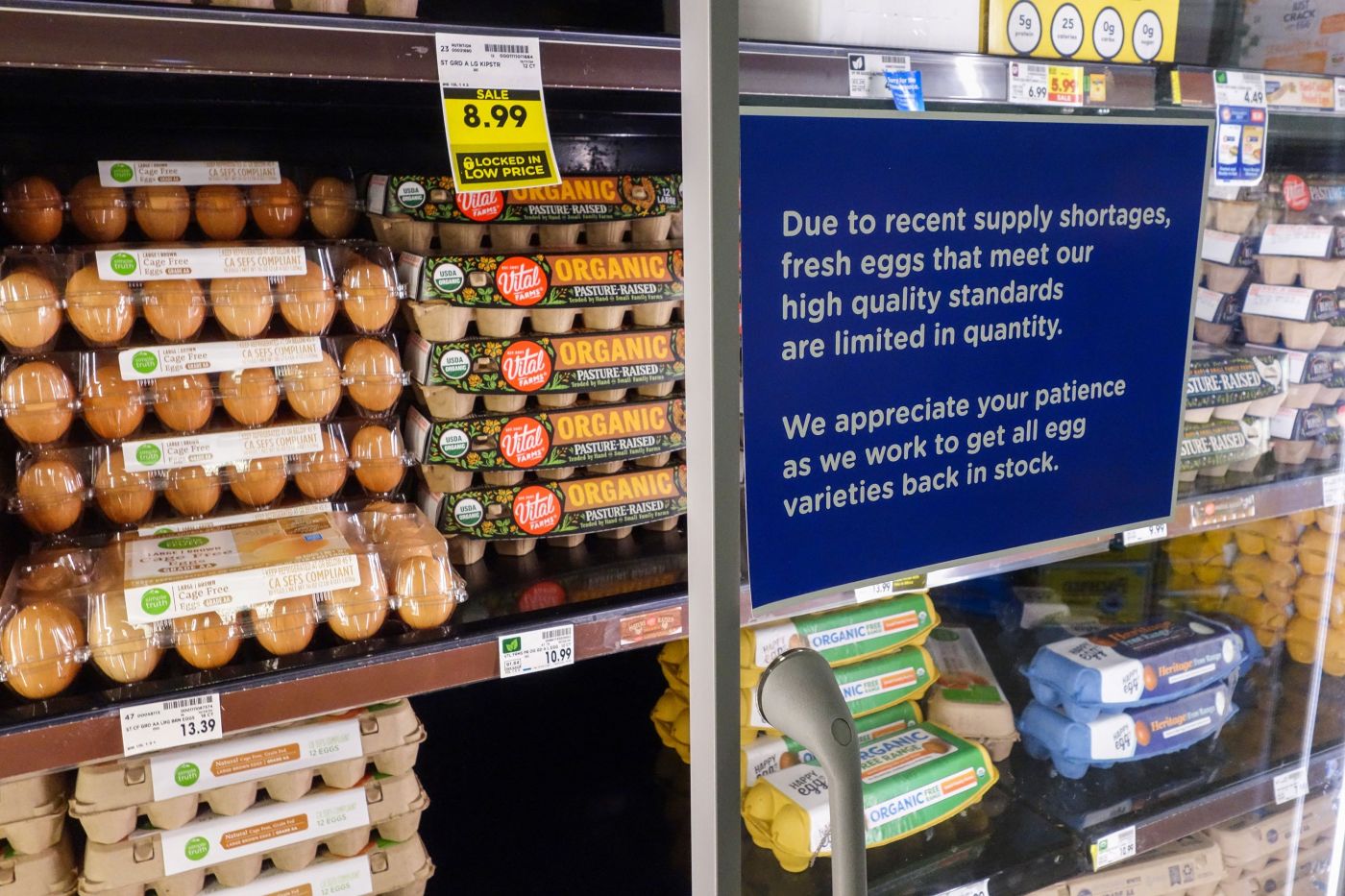
High egg prices weren’t Joe Biden’s fault. They’re not Donald Trump’s either, but they’re his problem now
By Vanessa Yurkevich | CNN
New York — The soaring price of eggs has alarmed consumers and the agriculture industry, and practically everyone in Washington is pointing fingers in various directions to direct blame.
It’s hard to lay America’s egg crisis at the feet of any one politician. But agricultural experts say politicians in Washington and around the country can do more to help curtail the highly pathogenic avian influenza, or avian flu, responsible for the deaths of more than 40 million egg-laying birds last year.
RELATED: First H5N1 bird flu case confirmed in San Mateo backyard flock
Because of short supply, egg prices rose 14% from November to December alone, and they are projected to rise another 20% this year, according to the US Department of Agriculture.
Grocery stores across the country are limiting egg purchases, Waffle House announced a 50-cent surcharge per egg, and New York Governor Kathy Hochul announced the shutdown of all live poultry markets in the state through February 14 to try to contain the spread.
“This is significant. This is having a big impact on the farmer, on the consumer throughout the country. Everybody’s feeling this,” said Bernt Nelson, an economist at the American Farm Bureau Federation, or AFBF.
Industry leaders including the American Egg Board are calling for a “comprehensive response” to the virus to stop the spread and stop prices from rising. The potential solutions, however, are contentious and expensive, and there’s no broad agreement about how to move forward.
The blame game
Freshly-laid chicken eggs in baskets before being washed and packaged for sale at a farm in Pleasureville, Kentucky, in January 2020.(Luke Sharrett/Bloomberg/Getty Images via CNN Newsource)
Instead, many politicians have used rising egg prices to turn the opposing party into a punching bag. For example, some Democrats in Congress were quick to criticize President Donald Trump’s chaotic agenda by noting that his actions to dismantle various aspects of the federal government will do nothing to lower the price of eggs. Trump also campaigned on the promise to lower grocery prices for Americans. “When I win, I will immediately bring down prices, starting day one,” he said on the campaign trail.
Last week, pushing back, White House press secretary Karoline Leavitt said egg prices have continued to surge because “the Biden administration and the Department of Agriculture directed the mass killing of more than 100 million chickens, which has led to a lack of chicken supply in this country, therefore lack of egg supply, which is leading to the shortage.”
That’s not exactly correct. Yes, the highly contagious virus is to blame for the deaths of 130 million birds during the Biden administration since 2022, according to the American Farm Bureau Federation. But that is because the USDA requires the culling of entire flocks to stop the spread if the virus is detected. It happened during the Biden administration and is happening right now under the Trump administration. One hundred thousand ducks were culled between January 20 and January 23 at Crescent Duck Farm in Aquebogue, New York, after the virus was detected there.
“There is nothing Biden could have done to stop the bird flu. There is nothing President Trump could have done to stop the bird flu – it’s neither of their faults,” said egg producer Frank Hilliker, who owns Hilliker Farms in Lakeside, California.
The reality is, farmers are contending with an incredibly contagious virus. It can take nine months to repopulate a flock of egg laying birds, which is why prices will remain high this year. But there are steps the federal government could take to try to protect flocks and eventually help bring down prices.
Beyond eggs
Doug Corwin, who owns Crescent Duck Farm in Aquebogue, says the biosecurity on his farm was “pretty tight.” Yet the virus still ripped through his flock, and it was culled. He says the USDA will compensate him for the loss of his birds but will probably cover only a third of what they’re worth.
He estimates he lost $1.5 million worth of birds. His ducks are sold as meat to restaurants around the region.
RELATED: First US case of new bird flu strain found on California duck farm
Corwin believes the only way to truly stop the virus is to vaccinate commercial flocks that produce eggs and are used for meat.
“We have to have some realism in terms of vaccine policy. We’ve got a strong boastful president. We’ve got to say, hey, this is something that we have to deal with,” said Corwin.
Vaccines among bird populations have been controversial because if a country starts vaccinating its birds, the virus is seen as endemic, and that can have trade implications, said Nelson of the AFBF. The US is the world’s largest poultry producer and second largest exporter of poultry meat. It is also a top global egg producer, according to the USDA.
“Other countries will not allow poultry from that country to be imported. And so that causes some tension, and that’s really the biggest reason why we don’t see a lot of any countries in general using these vaccines,” said Nelson.
The impact at Corwin’s farm shows how the virus has moved beyond just affecting the price of eggs.
“When we look at eggs as a product in general… and chicken meat, those are two very widely consumed products in the United States, and they’re both going to be feeling the impacts of this,” said Nelson.
Biosecurity is ‘not sufficient’
Since 2015, commercial egg farms have been required to have biosecurity plans in accordance with the USDA, according to the American Egg Board. But the enforcement has been hard to regulate. Even with the toughest of measures, the virus can slip through the cracks. Humans (via their shoes), rodents, pests and wild birds can all carry the virus to indoor commercial flocks.
“I think the biosecurity and biosafety that is in place is not insufficient,” said Rebecca Carriere Christofferson, an associate professor of pathobiological studies at the LSU School of Veterinary Medicine. “We really don’t have a good handle of what is happening with the virus in general.”
Egg producers have invested hundreds of millions of dollars of their own money in biosecurity since 2015, according to the American Egg Board. Those measures include washing down car tires, limiting visitors, requiring staff to shower before and after entering the facility, and using footbaths with disinfectant for shoes.
“We haven’t really seen a unified sort of response at the federal level. I think a surveillance network that was a little bit more active and at the federal level would really sort of be a signal that it was being taken more seriously by the people who are empowered to respond to it,” said Christofferson.
Christofferson and Nelson say increased federal funding into surveillance and research can help to detect and prevent the virus from spreading even further. It’s already been detected in dairy cattle and humans. Last week dairy herds in Nevada tested positive for a new variant of the virus that has been associated with severe infections in humans, according to the Nevada Department of Agriculture. One person in Louisiana died from the bird flu in early January, the first human death from bird flu in the US.
The-CNN-Wire
& © 2025 Cable News Network, Inc., a Warner Bros. Discovery Company. All rights reserved.


